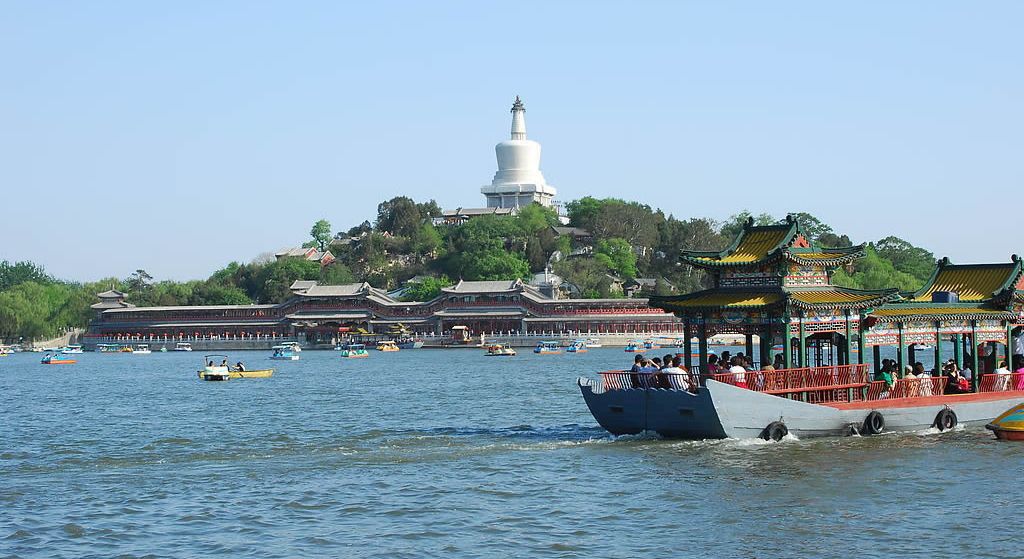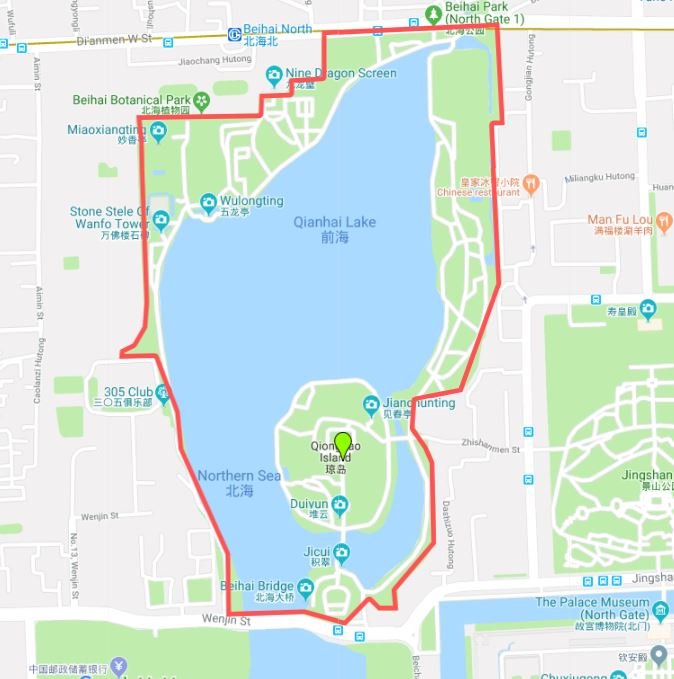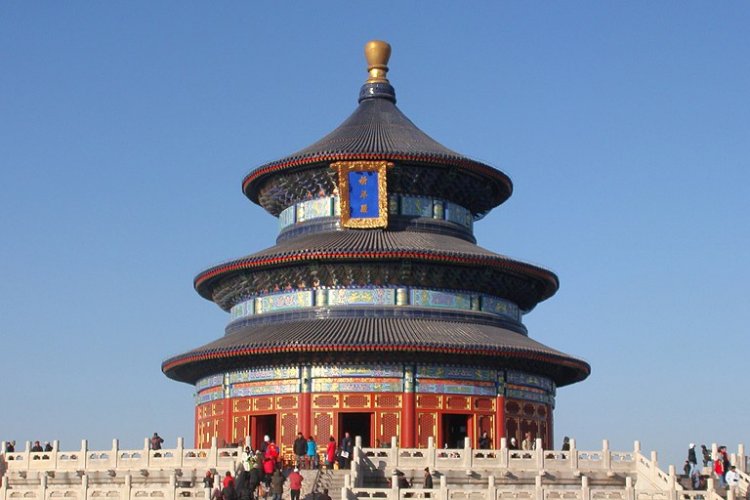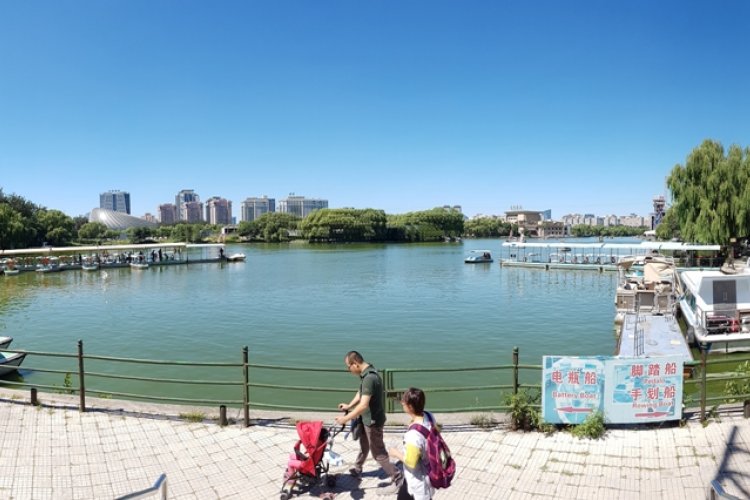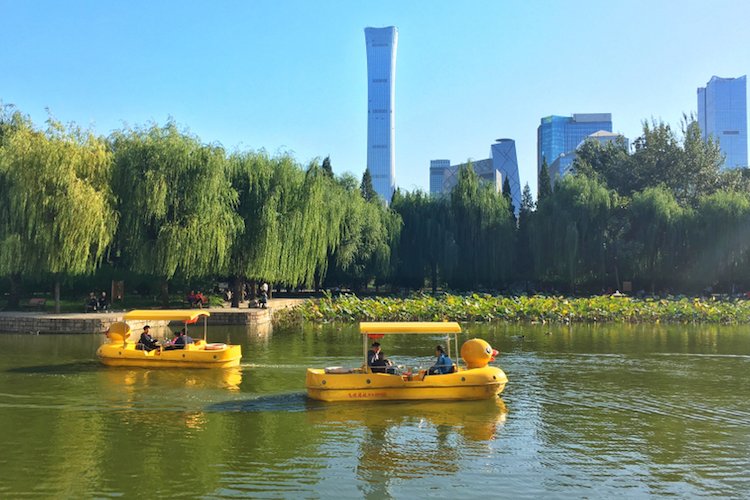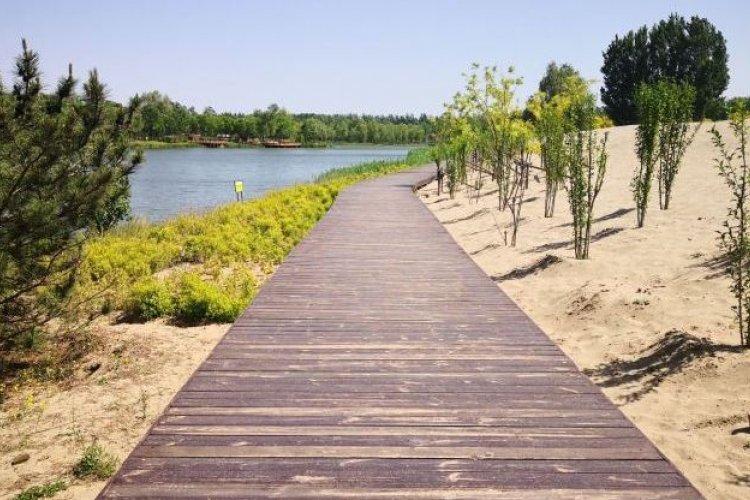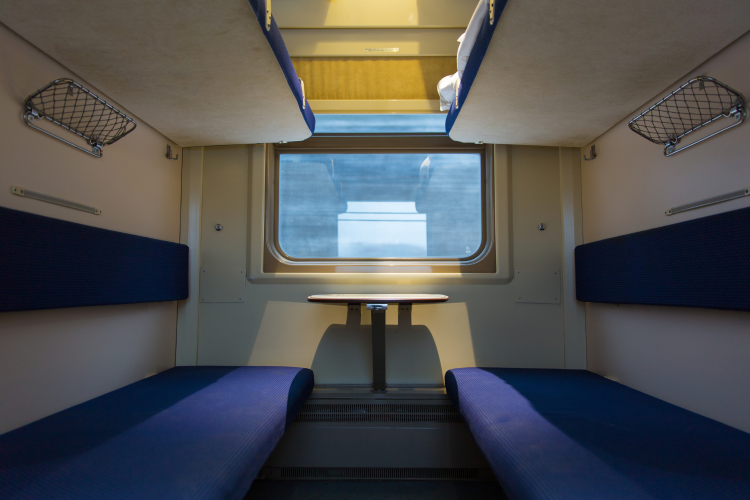Park Life: Everything You Need to Know About Beihai Park
Life's a park! We take a look at Beijing's most beloved parks, dig into what makes each of them special, and why they're worth your time to explore.
The practical stuff
Name: Beihai Park 北海公园
Address: 1 Wenjin Jie (South Gate), Xicheng District 西城区文津街1号 (南门)
Opening hours: 6.30am-9pm (April to October), 6.30am-8pm (November to March). Most interior sites are open from 9am-5pm
Price: RMB 10 in the summer (April to October), RMB 5 in winter (November to March) for park access. RMB 20 will buy a through-ticket (purchased outside the main gates) which also grants access to Qionghua Island and the Round City
Amenities: Concession stands throughout offering the usual assortment of sodas, drinks, ice cream, and snacks. Concession lodge on top of Qionghua Islet (in front of the White Dagoba) also has a limited selection of more substantial food (hotdogs, french fries, “burgers”) and even a selection of cold beers. Some stands may be closed in the winter. Plentiful restrooms of varying quality around the park.
Known for: One of the city’s oldest imperial landscapes, dating back to the 12th century. The large central lake is as popular with the emperors of yesteryear as it is with the urban residents of today.

A brief history
Beihai is part of a chain of lakes in the Ming and Qing era and is now one of the city’s most popular urban parks. The first work to shape the lake and its surrounding landscapes began during the Liao Empire of the Khitans (907-1125 CE) and was later expanded under Jurchen and Mongolian rule. The Round City at the southern end of the park dates back to the time of Kublai Khan (1215-1294) and a description of the lake and park can even be found in the journals of Marco Polo.
Beihai and its connecting lakes underwent a further transformation in the Ming dynasty (1368-1644) and most of the villas, temples, and structures which surround the lake today are from the Qing era (1644-1912). The White Dagoba, a chorten erected in 1651 to honor a visit by the Dalai Lama to the court of the Shunzhi Emperor [r. 1644-1661] towers over Qionghua Island and is one of the most prominent landmarks in central Beijing (the foreign community of Peking in the early 20th century used to refer to it – somewhat disrespectfully – as the “Peppermint Bottle” and used it as a point of navigation).
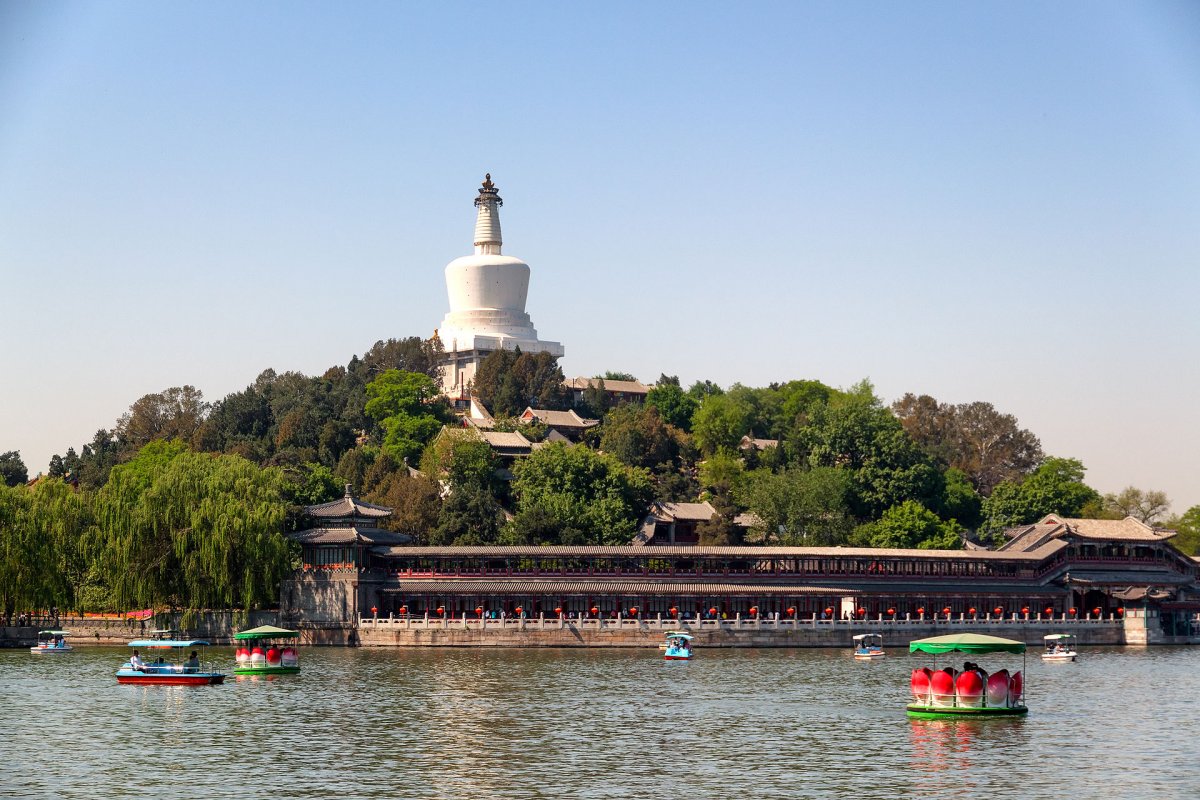
Activities
Despite the ravages of the 20th and 21st centuries, the park still clings to an air of imperial grandeur. The view from just inside the north gate across the water to the White Dagoba is one of Beijing’s most iconic vistas. While not as tall as nearby Jingshan, the view from the top of Qionghua Island is worth the five-minute climb.
The lakeshore boasts a number of imperial studios and pavilions. In particular, don’t miss the Jingxin Zhai (Studio of Quieting the Mind) on the northwestern shore. This beautifully restored garden was built in 1758 by the Qianlong Emperor and was a favorite haunt of the Empress Dowager Cixi (1835-1908) who often took her meals here. It was also reportedly where the last emperor Puyi sat and wrote his autobiography From Emperor to Citizen. The Haopu Jian is a cluster of buildings around a lovely little pool hidden behind the rocks and trees along the eastern shoreline. It’s a nice place to slip away from the crowds.
As befits a park with a famous lake, boating is also a popular activity. Peddle boats, electric boats, floating lotus boats, duck boats, and more are available to rent though most require a hefty deposit. There’s also a touring boat which traverses the lake between the western shore and the Qionghua Island. Standard tickets cost an ambitious RMB 50 per person with discounts available.
What sets this park apart?
Until its two partner lakes Zhonghai and Nanhai (currently the leadership compound for the PRC) open to the public, Beihai Park remains the best opportunity to get a sense of the opulent lake palaces where the emperors spent a great deal of their time. Because who wouldn’t rather hang out by a beautiful lake than sit in the confines of the Forbidden City?
Follow us on our mission to summarize every major Beijing park, right here.
Photos: Beijing Holiday, Wikipedia, Wikimedia

